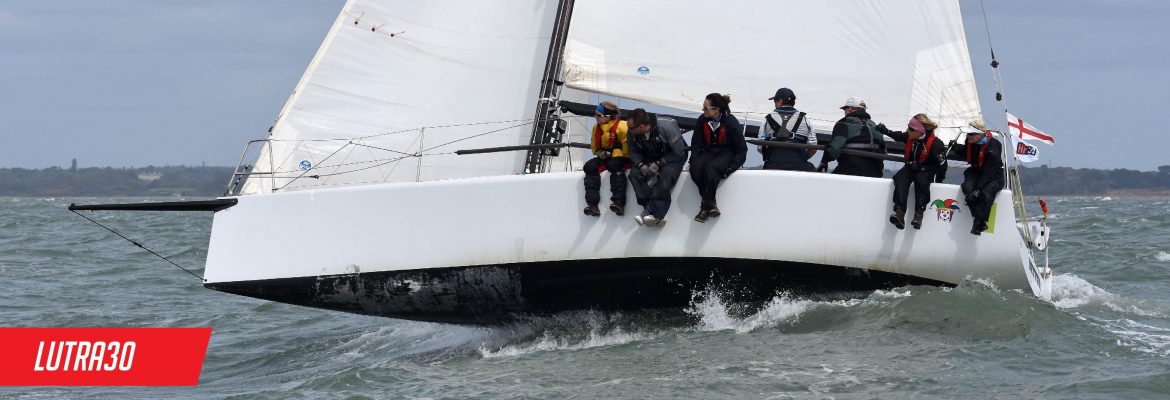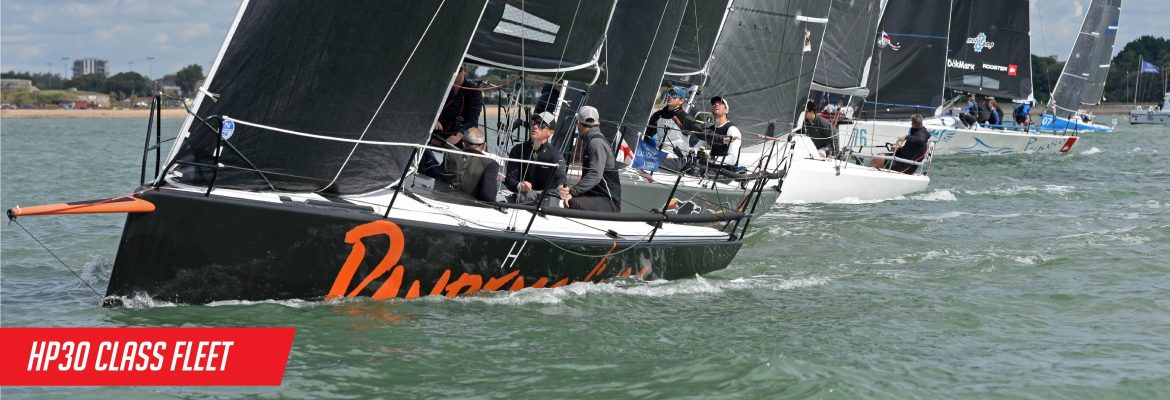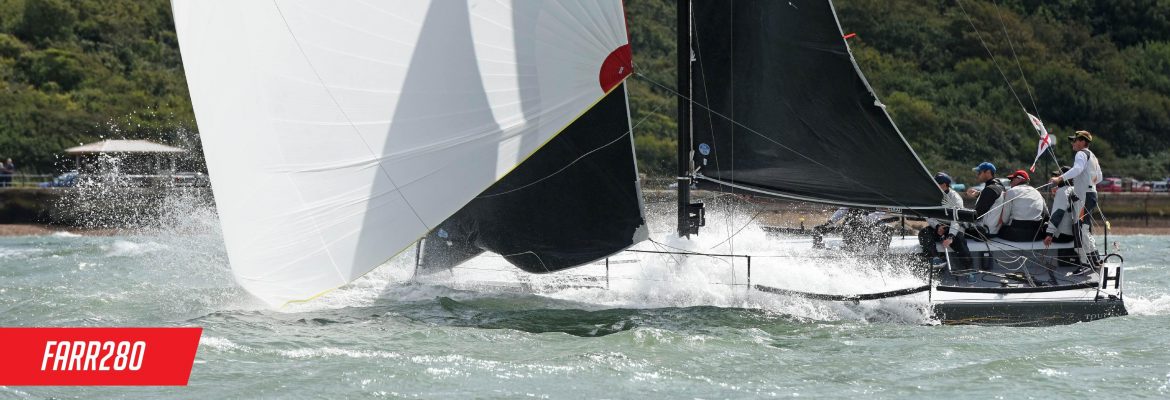ABOUT
The HP30 Class Race Circuit consists of a fleet of fast sailboats in the 30’ range. The fleet has emerged as a result of the natural evolution of sailing, with faster, more powerful designs becoming increasingly popular. The HP30 Class is home to production and custom boats, offering competitive, reliable, type form racing with speed and performance being the common denominator.
Update
Under the authority of the HP30 Class Association the rules presented in this document constitutes the sole reference for HP30 Class conformity.
Following consultation with the IRC Rating Office and with the existing owners and competitors, the HP30 Class Limits for 2022 onwards and the rules are as follows:
HP30 Class Rules Effective from 1st January 2020
The HP30 Class Rules are of an “open type” where anything not specifically prohibited by the Class Rules is allowed.
HP30 Class Primary Definitions
D1 HP30 Class boat shall be a ballasted keelboat with asymmetric spinnaker flown from a centreline sprit, holding a valid endorsed IRC certificate with a rating (TCC) equal or greater than 1.050 and equal or less than 1.140. [1]
D2 Existing boats are defined as boats first launched with a series date prior to January 2016. These boats are to be production boats from female moulds that have been commercially marketed. The hull shape and structure shall not be altered apart from repair work (maximum 10% of hull and or deck area) using originally specified materials. Additions such as accommodations, heads, bunks etc along with the removal of inboard engine and stern gear are allowed. Standing rigging must be stainless steel laid wire or rod with the exception of backstays or runners.
D3 New boats are defined as boats that are commercially marketed. The hull and deck manufactured from E glass reinforcement with local carbon reinforcement not extending more than 300mm in any direction. Banned materials – titanium, ultra high modulus carbon fibre (equal or greater than 600 Gpa), Nomex style cellular core material and prepreg reinforcement (prepreg is allowed in spar and rudder stock construction only). Standing rigging must be stainless steel laid wire or rod with the exception of backstays or runners.
HP30 Class Rules
Rule
R1 HP30 Class Boats are subject to IRC measurement and restrictions.
R2 Measurement to be carried out by an IRC rating office appointed measurer.
R3 a) Hull length (L.H.) shall not be less than 8.50m (for both existing and new boats) and not greater than 9.20m for new boats (9.50m for existing boats).
b) Beam max. (hull beam) shall not exceed 3.15m
c) Draft shall not exceed 2.45m for new boats (2.61m for existing boats) in salt water.
d) Mainsail luff length (P) shall not exceed 12.50m for new boats (13.30m for
existing boats).
R4 Keel bulb to boat weight ratio shall be equal or greater than 30% (bulb weight/boat weight x 100)
R5 Displacement length ratio (DLR as shown on IRC certificate) shall be 120 or less for new boats and existing boats 125 or less.
R6 Speed Ratio (TCC2/LH) shall be 0.13 or greater for new boats and 0.12 or greater for existing boats.
Safety
S1 HP30 class yachts that do not have an inboard engine shall carry an outboard motor capable of propelling the boat at a minimum speed of 5 knots together with at least 5 litres of fuel.[2]
S2 A suitable anchor with chain and dedicated anchor warp, not less than 30m long shall be carried.
S3 Offshore Special Regulations Cat 4
Advisory note to designers and owners – certain HP30 events may require category 4 safety compliance.
Rule Amendments
A1 IRC TCC adjustments.
To ensure HP30 Class yachts remain within the HP30 Class the IRC TCC limit and related HP30 Class ratio limits will be amended in line with any annual IRC rating changes to ensure that boats already accepted into the Class, remain in Class, as long as no changes have been made to the boat that would alter the rating (TCC).
M1 Only members of the HP30 association shall be eligible to enter events organised or sanctioned by the HP30 Class Association.
M2 HP30 Class membership fee may be discounted for foreign HP30 competitors or competitors who have purchased boats part way through a year, at the discretion of the HP30 Class management.
HP30 Class Logo
L1 HP30 logo shall be fixed to the upper part of the mainsail port and starboard side placed back to back,adjacent to the top sail batten.
L2 The HP30 Class logo is supplied by the Class Association.
The HP30 Class shall be under no liability whatsoever for any loss, damage, or expense of whatever nature, whether direct or indirect, (including but not limited to loss of profit) howsoever arising in the course of performance of the services provided under their Rules, UNLESS same is provided to have solely resulted from the wilful default of the HP30 Class or their employees or agents, or sub-contractors employed by them in connection with the services provided in which case the HP30 Classes liability for each incident or series of incidents giving rise to a claim or claims shall never exceed a total of (10) times the annual fee paid by one member.
New entrants and new boats to the class will be allowed to enter a maximum of 3 events in their first year without an endorsed certificate. Their results will not be counted in overall series scoring until their IRC certificate is endorsed by the RORC rating office. Their Endorsed TCC will be used to calculate their series scores.
Broadly speaking this means that the following boats fit into the class without any modification: C&C30, FarEast28, FarEast31, Farr280, Henderson30, MC31, Lutra 30.
HP30 Class Rule
The HP30 Class Rules are of an “open type” where anything not specifically prohibited by the Class Rules is allowed.
HP30 Class Logo
For usage please contact: secretary@hp30class.com









